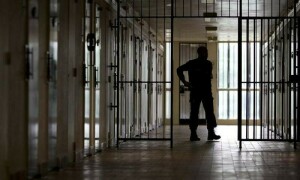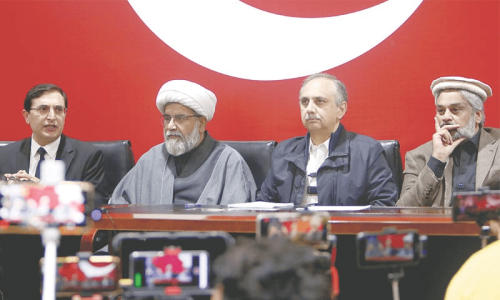• Sindh govt comes under fire over environmental degradation
• Transport responsible for half of city’s air pollution
• Sepa’s annual report not submitted since 2014
KARACHI: The Sindh government came under fire at an event on Monday for the lack of concern and action towards growing environmental degradation in Karachi, which was described as a bowl of poison due to its worsened air quality, taking a heavy toll on everyone, including pregnant women and their unborn children.
The event on “Karachi’s Ignored Toxic Air quality and the Mounting Health Toll” was organised by the Karachi Citizens Forum (KCF)
“The air is so polluted with toxic elements today that the city has literally turned into a bowl filled with poison, endangering survival of all forms of life,” shared Yasir Hussain, an environmentalist who has been studying the city’s air quality for over a year.
Half of the city’s air pollution, he pointed out, was caused by vehicular traffic. “We gradually need to phase out vehicles with internal combustion engines as vehicular emissions are a major source of air pollution. Burning fuel creates harmful byproducts like nitrogen dioxide, carbon monoxide as well as carbon dioxide,” Mr Hussain said.
He regretted that the successive governments chose harmful ways for energy production, aggravating the country’s environmental crisis and endangering public health.
“We should have made green solutions our priority for energy production and sought help from China, the largest solar panel maker in the world. But the governments opted for coal for energy production.”
According to him, the most traffic-congested areas in the city have the highest level of air pollution and the hotspots include Tibet Centre on M.A. Jinnah Road, Gulshan Chowrangi and Ayesha Manzil.
“We need to have an effective mass urban transport system and move towards zero emissions by implementing environment-friendly energy initiatives.”
Also raising serious objections over the Malir Expressway, he said the project would destroy the last green space surrounding the city.
Lack of air quality monitoring
The speakers also criticised the ineffective Sindh Environmental Protection Agency (Sepa) which, they said, had failed to perform its due role under the law and development projects were implemented without any environmental review.
The organisation, it was stated, had not submitted a single report on the environmental status of the province since 2014, which it was required to compile every year.
“Right now, 25 to 30 privately installed air quality sensors are working in the city. The irony is that Sepa neither accepts data of these equipment nor put in place its own system for air quality monitoring,” said Muhammad Tauheed, urban planner and researcher at the Karachi Urban Lab.
Mr Tauheed also shared concern over lack of consultation with stakeholders on Karachi’s master plan currently being prepared by the government.
“The city needs to have an effective mass urban transport and waste management systems. These subjects should be given priority in the document,” he said, adding that the city generating thousands of tons of waste daily had no place that should be technically called a landfill site and most of the domestic and hazardous medical waste had no safe ways for disposal.
Earlier, Dr Qaiser Sajjad and Dr Sabiha Khan highlighted how people in general were suffering due to the polluted air in the city.
“Air pollution is a silent killer and the largest single environmental health risk. Majority of the patients today at my clinic report with nasal allergies, nasal obstruction, sore throat, hoarseness, laryngitis and other illnesses, a major reason of which is air pollution,” said Dr Sajjad, an ENT specialist.
Studies, he said, had directly linked heart, lung, skin and brain diseases with poor air quality.
“This situation may get worse. The WHO expects climate change to increase the incidence of malnutrition, malaria, diarrhea, and heat stress, resulting in 250,000 deaths each year between 2030 and 2050,” he noted.
Sources of air pollution in Karachi, according to him, include emissions from factories, air conditioners and generators, burning of waste and unsafe construction.
In her remarks, activist Nargis Rahman said Karachi in recent weeks had become the world’s most air polluted city in the world, beating Lahore and Delhi.
“It’s a matter of life and death. The government must wake up and take action,” she said, citing a 2015 Lancet report according to which nearly 22 per cent of annual deaths in Pakistan were caused by air pollution.
Published in Dawn, December 20th, 2022















































